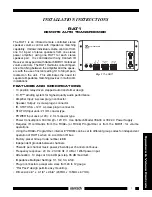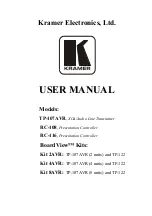
Fig. 3 illustrates the distribution of the sound-pressure relative to the respective feedback frequency. This frequency depends on your instru-
ment and lies between 180 and 220 Hz. So the distance from pressure-maximum to pressure-minimum (wavelength) measures about 2 m
(6 feet).
In order to avoid any influence on your instrument from the speakers you should choose your playing position in a pressure-minimum
area, since this achieves the clearest sound and lowest feedback- tendency.
The best position you will find easily while moving away from the speaker with raised volume. You will notice the feedback decreasing
about every 1 or 1.5 meters (3-5 feet). While conducting this experiment it’s advisable to dampen the strings and the bridge with your
hand in order to spare your ears and above all the speakers.
The unique characteristics of the SCHERTLER® Transducer provide you with a device with very low impedance and balanced signal ouput.
This lessens the probability of having problems such as line noise, humming and interference (i.e. radio noise), even if very long cables are
used. Thanks to the transducer's high dynamics, transducer noise is kept to a minimum.
Since the transducer has a flat frequency response we don’t recommend trying to improve the sound through equalization. As necessary
you can adjust the mounting position of the transducer to control the sound. However, to reduce certain frequencies at around XXX Hz, a
parametric equalizer could be helpful to give the sound more transparency. (The SCHERTLER® PRE-A Acoustic Preamp is provided with such
a filter).
The SCHERTLER® Transducer can be connected in several different ways, three of which are listed below:
1) Directly to the mixer or a microphone-amp with balanced XLR-Inputs (Canon). This will be the most
customary way to amplify most instruments. This is especially helpful during studio recording as it guarantees highest fidelity, but also in
"live" performances where you have the possibility to play directly into the house sytem or concert set-up.
2) Even if there is no PA/mixer system available you still shouldn’t miss out on the advantages that a "full range" speaker system offers.
You can use the SCHERTLER® PRE-A Acoustic Preamp in conjunction with the transducer: this device is musically and technically synchro-
nized to the SCHERTLER® Transducer and provides a preamplified signal (+20dB) for connection to any power-amp or active speaker. Using
our original SCHERTLER® PUB 2/280 or 3/400, very compact, high quality, two and three way active loudspeakers will obtain surpris-
ing results.
3) The transducer can also be connected to any guitar amp (using an adapter or cable canon/jack). Yet, one must never forget that most
instrument amplifiers don’t have the ability to reproduce an acoustic instrument sound correctly. The SCHERTLER® Transducer provides a
very acoustic, microphone-like signal, which needs no additional improvement at all (amp-character, equalizer) unlike piezoelectric pickups.
Therefore you should always use amplifiers and speaker systems that are best for piano or voice too. Should you be in a situation where
you are forced to use a bass or guitar amplifier, we recommend the use of the Acoustic Preamp, PRE-A, plugged into the "effects return"
(or "slave in") of the amplifier, which should by-pass the system preamp of the amplifier, which generally manipulates the input signal gen-
erating a more electric sound.
USING THE DYN-V
PLAYING POSITION
1
2
4
3




















